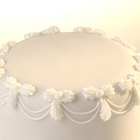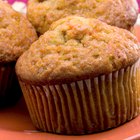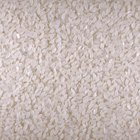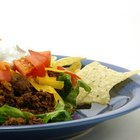
Recipes for cookies often call for baking soda or cream of tartar, or in some cases, both. Cream of tartar and baking soda play different roles in the formation of baked goods, and can't be exchanged one for another. Understanding what each ingredient does will help you better understand the baking process.
Baking Soda
Sodium bicarbonate, more commonly called baking soda, is an alkaline, or base, material. One of its major roles in baking is to leaven, or to help quick breads, cakes and cookies, rise. The ingredient can leaven in one of two ways. It can react with an acidic ingredient in a recipe, such as vinegar, cream of tartar or buttermilk. The reaction creates carbon dioxide, which forms air bubbles and causes the dough or batter to rise. The other way baking soda can cause batter or dough to rise is by the addition of heat, which breaks it into sodium carbonate, carbon dioxide and water. Along with helping baked goods rise, baking soda also helps them brown.
Cream of Tartar
Cream of tartar, or potassium bitartrate, is a by-product of the process of making wine. It is the yin to baking soda's yang, meaning it is acidic, while baking soda is basic. When in a recipe together, the two react to help the food rise. Cream of tartar has others uses in cooking, too. When added to frosting or candies, it prevents sugar from forming crystals. You can also add a bit of cream of tartar to egg whites for more volume and stability when making a meringue.
Storage and Shelf Life
You can store both cream of tartar and baking soda at room temperature. Baking soda has a shelf life of three years, as long as you keep it in a cool, dry place. Old baking soda won't leaven as well. You can test the ingredient by mixing 1/4 teaspoon of baking soda with 2 teaspoons of vinegar. If the mixture fizzes, your baking soda is still good. Cream of tartar needs to be kept dry, or else it will clump. Use it within one year of purchase.
Substitutions
Substituting baking soda or cream of tartar on its own in a recipe can be tricky. However, if the recipe calls for both ingredients, you can try to substitute baking powder for both. Use four times as much baking powder as you would baking soda, as it is less potent. If you only need to replace cream of tartar, try using a slightly smaller amount of another acid, such as 1 teaspoon of vinegar instead of 1 teaspoon of cream of tartar.
Related Articles
Xanthan Gum vs. Potato Starch

Pantene Shampoo Ingredients

What Can You Use in Place of Egg Yolk ...

Composition of Monosodium Glutamate

How to Make a White Decorator Icing

What Is a Substitute for Potassium ...

A List of Leavening Agents

Using Vinegar in Baking

Substitute for Manioc Starch

Cooking Yogurt Without Curdling It

What Happens When Vinegar & Yeast Are ...

How to Bake With Rice & Potato Flours

Calories in a Tablespoon of Cream Cheese

Merle Norman Ingredients

How to Make Prahok Sauce

What Can I Use in Place of Sour Cream?

Heavy Whipping Cream Vs. Half & Half

Ingredients in Olay Total Effects

What Is Accent Seasoning?

Aveda Shampure Ingredients
References
Writer Bio
Based in Pennsylvania, Emily Weller has been writing professionally since 2007, when she began writing theater reviews Off-Off Broadway productions. Since then, she has written for TheNest, ModernMom and Rhode Island Home and Design magazine, among others. Weller attended CUNY/Brooklyn college and Temple University.
Photo Credits
Martin Poole/Photodisc/Getty Images